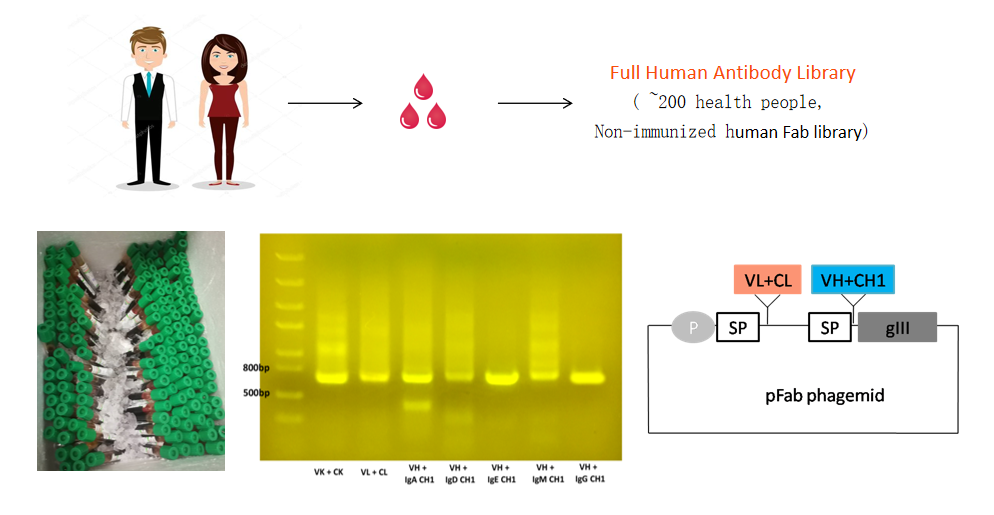Cases
Construction of a Human Antibody Library
Background:
The development of therapeutic monoclonal antibodies has gone through four stages: murine antibodies, human-murine chimeric antibodies, humanized antibodies, and fully human antibodies. Among them, the fragment antigen-binding region(Fab) and fragment crystallizable region(Fc) of fully human antibodies are both from human, eliminating immunogenicity and toxic side effects caused by murine fragments, making it the main direction for the development of therapeutic antibodies. The emergence of phage antibody library technology provides a simple and fast preparation route for fully human antibodies and has gradually become one of the main methods for obtaining fully human antibodies.
Service process:
ABLINK uses unimmunized healthy human peripheral blood lymphocytes as materials, and uses cDNA reverse transcription from cell mRNA as a template for PCR amplification to obtain the variable region (VH and VL) gene library of antibodies. Then, overlap PCR is used to connect VH and VL into a single-chain variable fragment(scFv), and Gibson Assembly is used to clone scFv into phagemids, which are then electrotransformed into host cells and supplemented with helper phage infection to construct a natural fully human phage antibody library. The size of the fully human antibody library, which is built by merging multiple small libraries, can be greater than 10^10.

